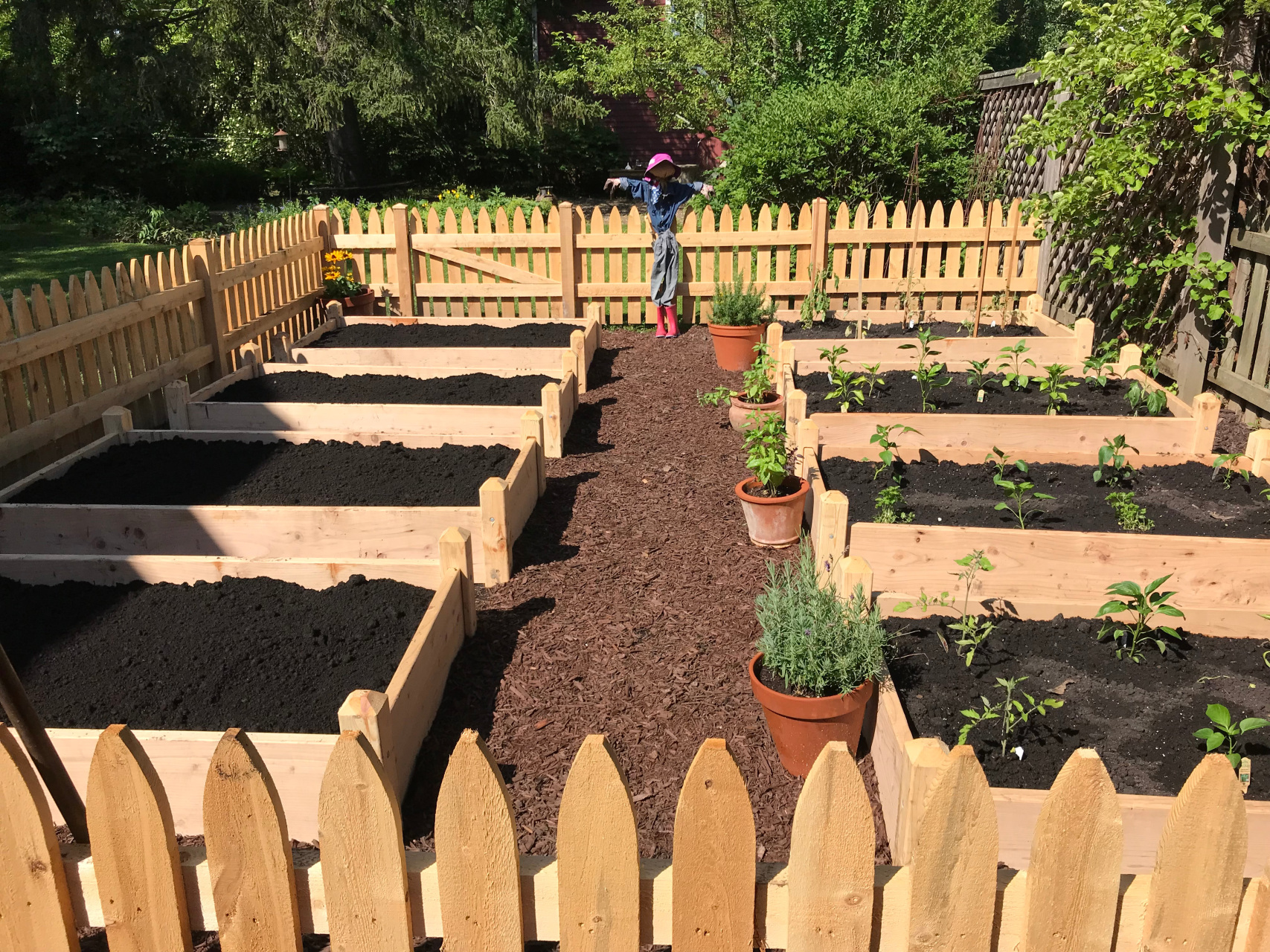In our early days of gardening with raised beds, we fought the same battles many gardeners face: pests, weeds, and dry soil. As our experience grew, we learned that adding a layer of mulch tackled all these problems at the same time. Now we would never garden without it.
Raised garden beds have gained tremendous popularity in the last few years thanks to their easy maintenance and aesthetic appeal. But one crucial aspect of maintaining a successful raised bed garden is choosing the right mulch.
Hey fellow gardeners! I’ve been getting tons of questions about mulching raised garden beds lately, so I thought I’d share my experience and knowledge about this super important gardening practice. As an avid gardener with years of experience working with raised beds, I can tell you that proper mulching can make a huge difference in your garden’s success.
Why Should You Mulch Your Raised Garden Beds?
Let me tell you why mulching your raised beds is a total game-changer
- Moisture retention – This is probably the biggest benefit! Mulch acts like a protective blanket, keeping water from evaporating too quickly from your soil
- Weed suppression – Nobody likes weeding, right? A good layer of mulch helps prevent those pesky weeds from taking over
- Temperature regulation – Mulch helps keep soil temperatures more stable, protecting roots from extreme heat and cold
- Soil improvement – As organic mulches break down, they add nutrients and improve soil structure
- Erosion prevention – Mulch helps prevent soil from washing away during heavy rains
- Aesthetic appeal – Let’s be honest, a nicely mulched bed just looks better!
Types of Mulch for Raised Beds
Here at our garden center we recommend these main types of mulch
Organic Mulches
-
Wood-based mulches
- Bark (shredded or chips)
- Wood chips
- Pine needles (great for acid-loving plants)
-
Plant-based mulches:
- Straw
- Grass clippings
- Shredded leaves
- Newspaper
Inorganic Mulches
- Landscape fabric
- Rubber mulch
- Gravel or stone
- Plastic sheeting
How to Apply Mulch in Raised Beds
Let me walk you through the process I use:
-
Timing: Best time is mid to late spring when soil has warmed up
-
Preparation:
- Clear any weeds
- Water the soil thoroughly
- Add compost if needed
-
Application:
Proper mulch depth:- Coarse materials: 3-4 inches- Fine materials: 2-3 inches- Around plant stems: Leave 2-3 inch gap
Common Mulching Mistakes to Avoid
Trust me, I’ve made these mistakes so you don’t have to!
- ❌ Piling mulch against plant stems (aka “volcano mulching”)
- ❌ Applying mulch too thick
- ❌ Using fresh wood chips that can rob nitrogen from soil
- ❌ Mixing mulch into the soil instead of laying it on top
- ❌ Applying mulch to dry soil
Pro Tips from My Experience
-
Choose the right mulch: For veggie gardens, I prefer organic mulches like straw or shredded leaves. They break down and improve soil quality.
-
Layer properly: Here’s my tried-and-true layering technique:
Bottom layer: Newspaper or cardboardMiddle layer: CompostTop layer: Organic mulch -
Maintenance: Check mulch depth monthly and replenish as needed.
Season-by-Season Mulching Guide
Spring
- Remove old mulch
- Apply fresh layer after soil warms
- Use lighter layers around seedlings
Summer
- Add additional mulch as needed
- Water deeply but less frequently
- Monitor for pest problems
Fall
- Add thick layer for winter protection
- Use leaves and straw
- Protect perennial roots
Winter
- Maintain mulch layer
- Check for heaving after freezes
- Plan for spring replacement
Cost-Effective Mulching Solutions
Save money with these tips:
-
Free sources:
- Fallen leaves
- Grass clippings
- Newspaper
- Local tree services (wood chips)
-
Bulk buying:
- Share with neighbors
- Buy during off-season
- Look for municipal programs
Troubleshooting Common Issues
Sometimes things don’t go as planned. Here’s what to watch for:
| Problem | Solution |
|---|---|
| Mold growth | Reduce thickness, improve air flow |
| Pest problems | Switch mulch type, reduce depth |
| Soil too wet | Decrease mulch depth, improve drainage |
| Nutrient deficiency | Add composted materials |
Environmental Benefits
We’re all trying to garden more sustainably, right? Mulching helps by:
- Reducing water usage
- Decreasing chemical weed control
- Supporting beneficial insects
- Improving soil health
- Reducing erosion
Final Thoughts
Mulching your raised beds might seem like extra work, but trust me, it’s worth every minute! I’ve seen amazing results in my own garden, and my plants are healthier and more productive with proper mulching.
Remember, there’s no one-size-fits-all solution. Don’t be afraid to experiment with different types of mulch to find what works best in your garden. And hey, if you make a mistake, no worries – we all do! Just adjust and keep growing.
Would you like me to explain or break down any part of this guide in more detail? Drop your questions in the comments below!
Happy gardening, everyone!
[Note: This guide is based on personal experience and research. Your results may vary depending on your specific climate and growing conditions.]

What is the best time of year to mulch?
Applying mulch in springtime, after the soil warms, will prevent the chilling of new seedlings. You can also apply mulch in the fall to protect bare soil from erosion over the winter, though cover crops are our preferred method for addressing this issue.
Can I use grass clippings as mulch in my garden?
Grass clippings can be used as mulch, but some considerations apply. Use only pesticide-free grass clippings, as these chemicals can be harmful to plants. Some can affect future crops by inhibiting germination. If possible, it’s best to allow the grass clippings to dry slightly before applying them as mulch to avoid clumping.
Best Mulch for a Vegetable Garden
0
